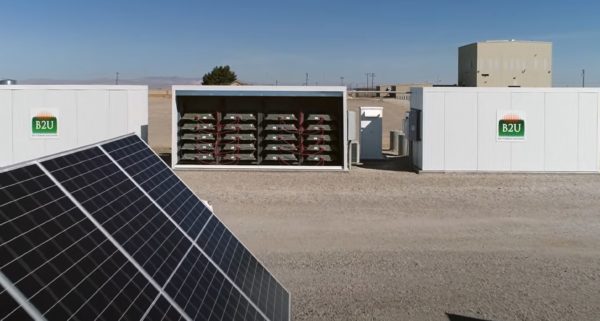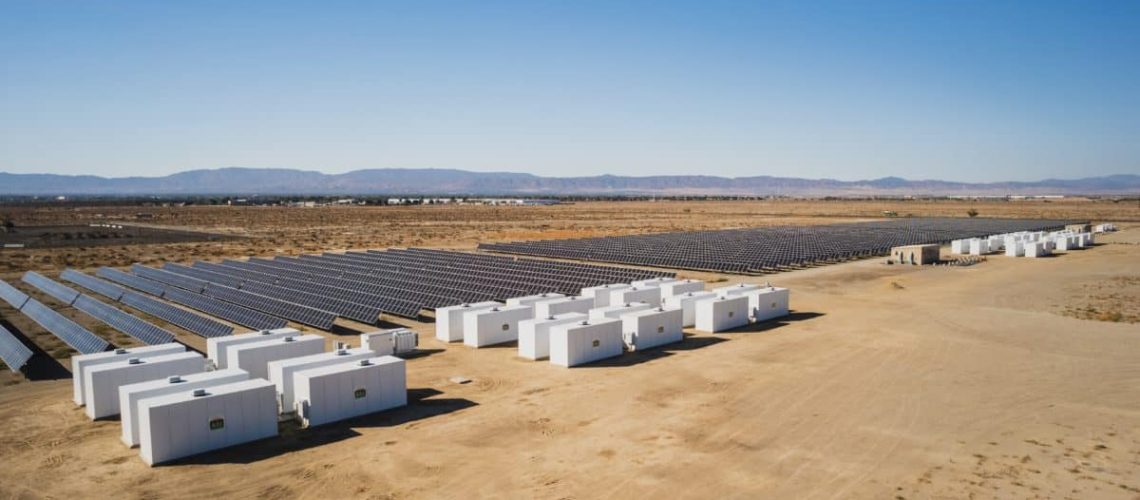The largest UL-certified facility was expanded by 1,300 former Honda Clarity EV batteries, bringing its total storage capacity to 25 MWh.
B2U Storage Solutions has deployed 1,300 Honda Clarity second-life battery packs at its SEPV Sierra Solar & Storage facility in Lancaster, California. These additional units bring the facility to 25 MWh of storage capacity (DC), coupled with a 3 MW solar array.
The group says that it is the largest operational UL 9540-certified energy storage system in the world. A quick online search suggests that the next largest second-life EV battery facilities are in the single digital megawatt-hour range, suggesting this could be the largest second-life EV battery facility.
The company has a video showing the power facility, along with the insides – and some light technical data. There are 24 Clarity battery packs per container, totaling about 456 kWh per unit.
The company’s gear can work with any EV battery, and has been tested successfully with Tesla Model 3 and GM Bolt battery packs.
When asked by pv magazine USA what kind of strategies the company uses to source their batteries, B2U said:
“Working directly with auto OEMs, EV fleet operators, dismantling companies and others to source batteries when automotive use is complete. Reuse is complementary to recycling by maximizing the residual value of the battery before all batteries are recycled when second life viability is complete.”
The California solar-plus-storage facility completed 2020 with 4 MWh power capacity, and added 6 MWh in 2021. Gradually, another 15 MWh was added through 2022 and early 2023, bringing the site to its current 25 MWh capacity. There’s an additional 2 MWh of capacity potential at this power plant.
One might begin to be able to project what volume of power grid capacity could come from formerly operational EVs based upon car retirement projections. EV battery capacity is projected to outpace power grid needs, including standalone energy storage.
An analysis by Lazard suggests that by 2030, 90% of lithium batteries might initially be installed in vehicles. Benchmark Materials shows greater than 8 TWh/year of global lithium ion manufacturing capacity announcements by 2031. On average, humans consume approximately 2.4 TWh of electricity every 24 hours.
If the United States’ future vehicle fleet of 300 million units were electrified, at an average 50 kWh per vehicle, that would put 15 TWh of energy storage on the roads. Averaged over the course of a year, the U.S. uses around 11 TWh of electricity every 24 hours.

B2U has two types of car batteries at the facility: some made by Nissan, and the rest by Honda. The Honda Clarity is a plug-in hybrid with a 181 HP motor and 17 kWh battery. This model is no longer being produced.
There is a secondary market for used EV batteries that are in working condition. A search for Nissan Leaf pricing found a Wall Street Journal article stating, “Battery packs from a first-generation Nissan LEAF were sold for an average of $130 per kilowatt hour in 2021—roughly $3,500 for a 24 kilowatt-hour model—according to Circular Energy Storage Research and Consulting.”



